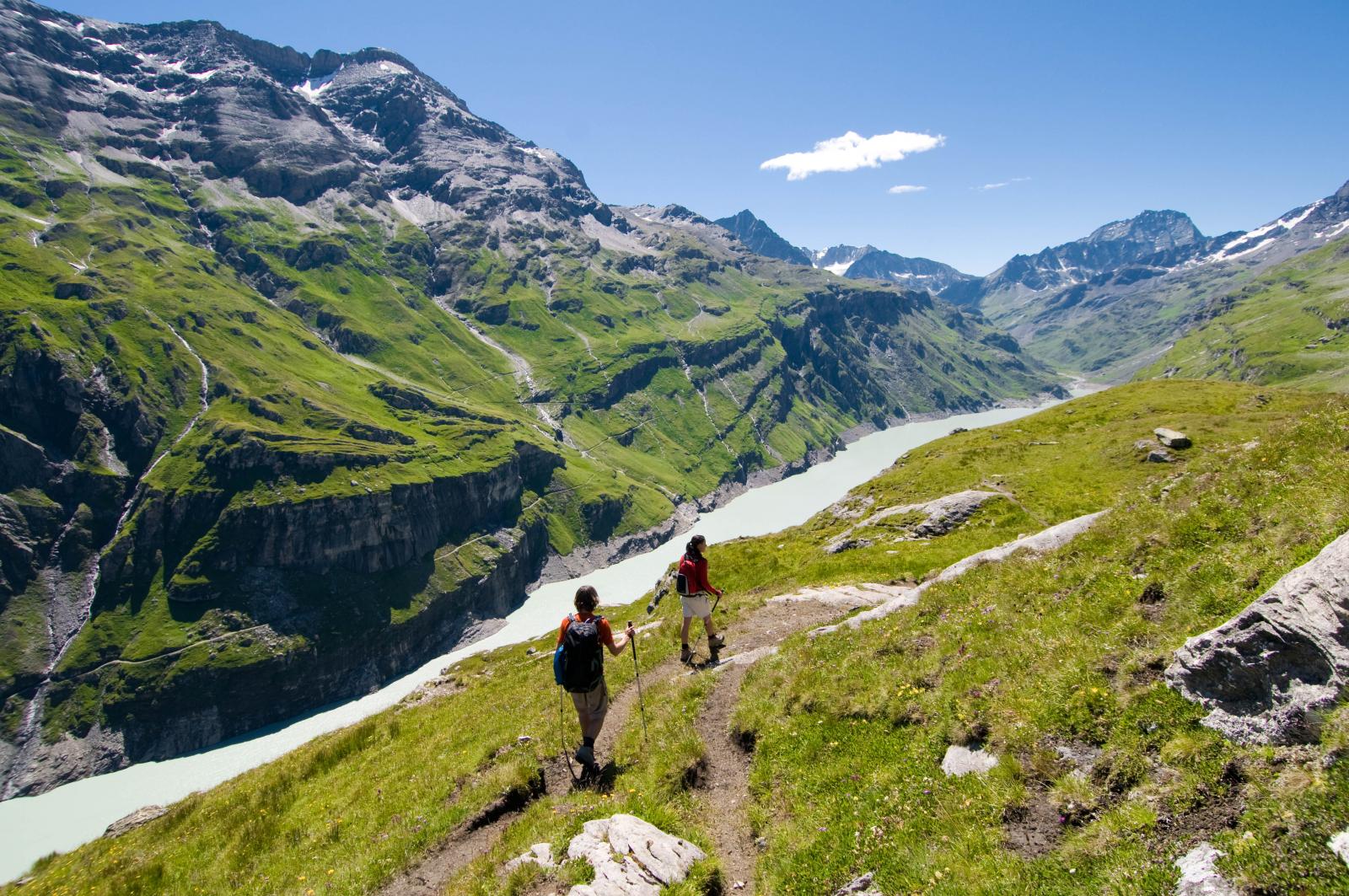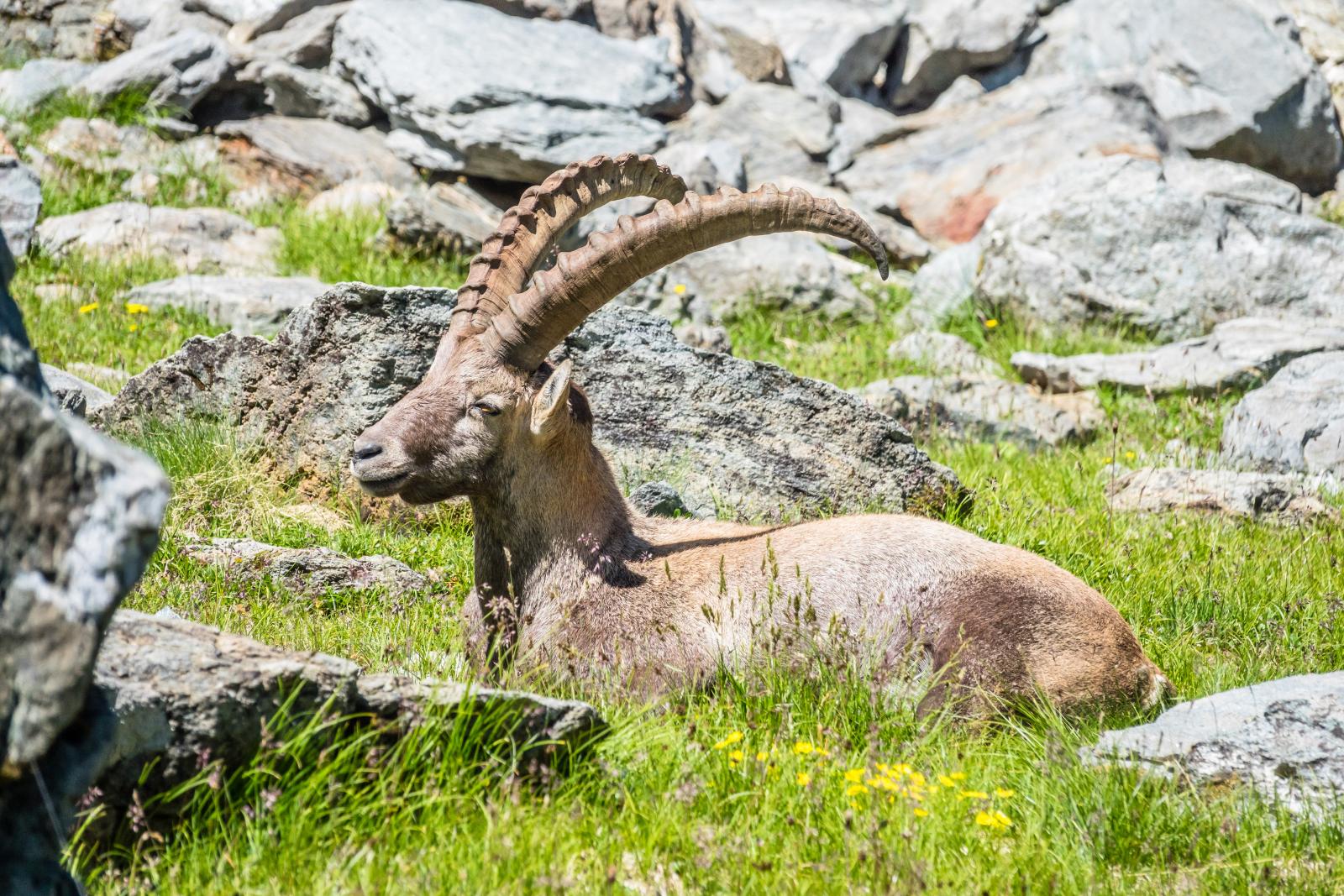- Trips
- Tour Calendar
- About Our Tours
- Plan a Trip
- Book a Trip
- About Us
- Contact Us


Glancing at your vacation itinerary should give you an adrenaline rush. If not, you could be suffering from "Destination Redundancy Syndrome"—a common ailment among those whose vacations have become so predictable they can calculate their tips in advance. The Swiss have a cure for it—Tapetenwechsel (literally, "let's change the wallpaper"). It means you're bored with where you are and you're ready to go somewhere else. Should you ever tire of visiting the same old places, and get a craving for a hiking vacation that takes you off the tourist trail, the Swiss canton of Valais has some hidden secrets waiting for you.
The undeniable siren song of Switzerland's sentinel mountains has made it the playground of Europe for hundreds of years. It's the showpiece of Western Europe and a country crisscrossed by historic trade routes-so you might wonder if Switzerland has any corner left to discover. But as you dream of a vacation to take your breath away without taking away your life savings, know that Valais, nestled in a valley between two spines of the Alps, has enough hidden history, natural wonders, and startling surprises to generate some pre-vacation euphoria.
A little larger than Long Island, New York, Valais is at once Switzerland's best known and least known region. It's home to the Matterhorn, arguably the world's most widely recognized mountain, and some of Europe's most popular resorts, like Zermatt and Verbier. But within an echo of those iconic destinations are seasonal hamlets, traditional villages, and alpine escapes that few lifelong residents of Valais, Rhône Valley have ever seen.
Until a tunnel was built in 1965, there was no road access into the Binntal (Binn Valley), a small lateral valley near the remains of the Rhône Glacier. And even today the 16th century stone bridge leading into the village of Binn bears the weight of more goats and hikers than cars and buses. Lavish Baroque altars adorn the tiny parish church of Saint-Michel, dating to 1561, and cobblestone lanes lead past sun-burnished timber houses and small farming plots.
The people of the Binntal signed a compact fifty years ago to perfect nature and resist development. The ski lifts and mass modern expansion that have overtaken so many other Alpine communities are appreciatively absent in villages like Binn, whose population of 70 make it the largest town in the valley and the only one with a hotel, the Ofenhorn, a Belle Epoque gem that once hosted a strapping Winston Churchill.
The Binntal is known locally as the "Valley of Hidden Treasures" for its extraordinary mineral content. On guided excursions, visitors can go in search of those hidden treasures-rare and colorful crystals. Ascending the valley on your crystal hunt you'll discover the hamlet of Imfeld (population 7). When this clustered village burned to the ground in the 15th century, it was rebuilt with the addition of a village chapel and has remained substantively unchanged ever since. In the unlikely event you return empty-handed in your search for crystals, you will still have found in the Binntal a 16th century masterpiece and a traditional way of life, both set in a showcase of exquisite natural beauty-a rare find for 21st century travelers.
 On the western and opposite end of Valais from the Binntal is the mega-resort of Verbier. Its aspect on the sunny southern side of the Alps in an expansive glacial bowl laced with 35 lifts and access to 400km of marked runs makes it one of the largest and most popular ski resorts in the world. But when the snow melts in spring, Verbier becomes a jumping-off point, giving walkers and hikers ready access to spectacular mountain views and the Upper Val de Bagnes Nature Reserve, one of the finest protected wildlife areas in the Alps, and the second largest in Switzerland.
On the western and opposite end of Valais from the Binntal is the mega-resort of Verbier. Its aspect on the sunny southern side of the Alps in an expansive glacial bowl laced with 35 lifts and access to 400km of marked runs makes it one of the largest and most popular ski resorts in the world. But when the snow melts in spring, Verbier becomes a jumping-off point, giving walkers and hikers ready access to spectacular mountain views and the Upper Val de Bagnes Nature Reserve, one of the finest protected wildlife areas in the Alps, and the second largest in Switzerland.
From the heart of Verbier, take the gondola to Les Ruinettes and follow a well-marked footpath to the Cabane du Mont Fort, a mountain inn which affords some inspiring views of Mont Blanc to the west. As you cross the small bowl to the south, a rocky trail known as the Sentier de Chamois (the Chamois Trail) leads toward Col Termin and Lac de Louvie and into the nature reserve. Keen eyesight and binoculars fixed on the slopes above will expose the rocky crags and overhangs that provide habitat for alpine species such as marmots, ibex, and chamois.
Both the ibex, with its overwhelming scimitar-shaped horns, and the chamois, a goat-antelope species with smaller hook-tipped horns, were nearly hunted to extinction in the early 20th century. Today, in protective reserves like the Upper Val de Bagne, populations of both species have rebounded dramatically. Spotting family groups of ibex with a half dozen small kids bounding fearlessly from rock to rock is not uncommon. The chamois, which can ascend 3,000 vertical feet of mountain slope in just 15 minutes, is naturally more elusive, but can often be seen grazing on sheltered patches of grass below the trail.
 It's a quick and easy return to Verbier, but the more aggressive hikers will want to continue on the belvedere trail to Lac de Louvie, another hidden jewel of Valais. As you approach the lake from the north, don't miss exploring the two large barns with their miraculously self-supporting vaulted stone roofs. Dating to the early 19th century, these ingenious structures have been beautifully restored and classified as historic monuments.
It's a quick and easy return to Verbier, but the more aggressive hikers will want to continue on the belvedere trail to Lac de Louvie, another hidden jewel of Valais. As you approach the lake from the north, don't miss exploring the two large barns with their miraculously self-supporting vaulted stone roofs. Dating to the early 19th century, these ingenious structures have been beautifully restored and classified as historic monuments.
Continuing on to the Cabane de Louvie for the night puts you on the serene lakeshore with the glaciated Grand Combin as a towering mountain backdrop. In Lac de Louvie's pristine setting it's easy to imagine yourself being a hundred miles from the nearest soul. But a surprisingly short-and steep-descent into the village of Fionnay offers an easy bus return to Verbier and a striking example of how easy it is to find hidden surprises in Valais, age-old alpine valleys.
The Binntal is a popular stop on Alpenwild private group tours, and the Upper Val de Bagne Nature Reserve is a favorite area for wildlife viewing on the Swiss Haute Route.